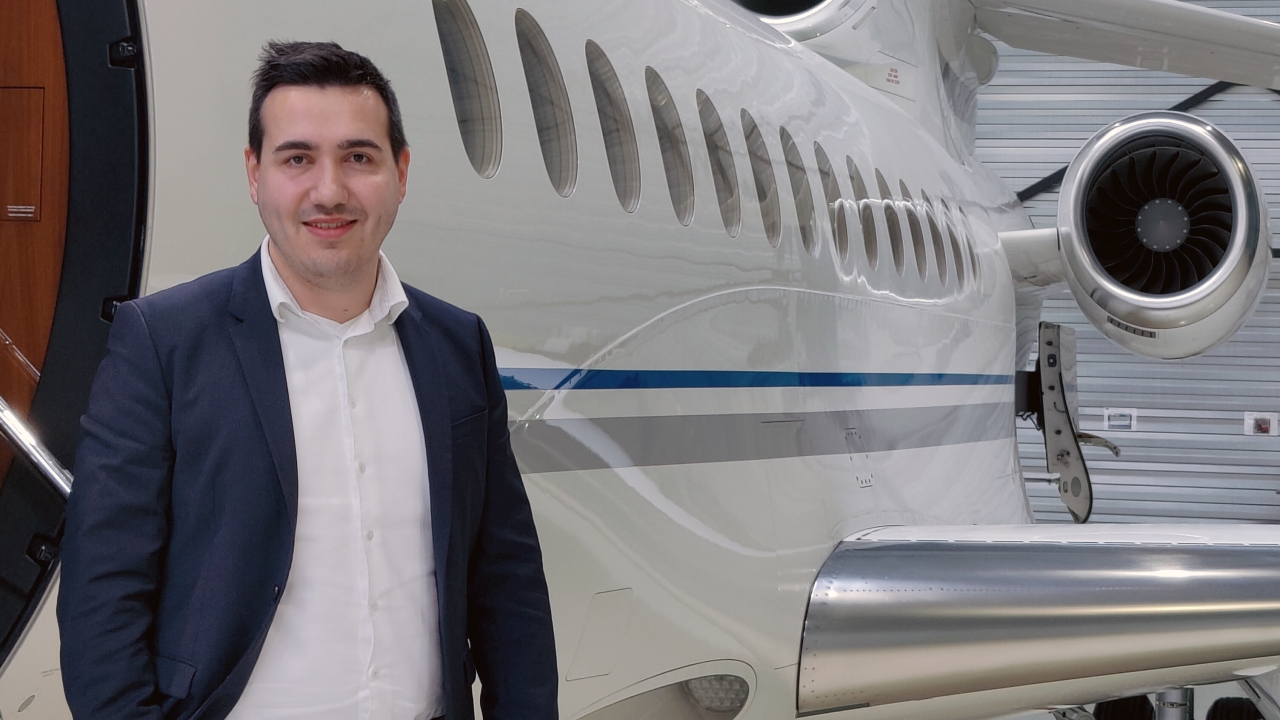MAEAM makes a B-line for regional electric market
French start-up, Multi Access Electric Air Mobility (MAEAM), launched a new “disruptive” aircraft programme at EBACE.

The sister company to light aircraft designer, Lisa Airplanes, unveiled a hybrid-electric aircraft capable of carrying 19 passengers for regional charter or airline.
MAEAM call the concept ‘B.koya’, a nod to Lisa’s two-seat amphibious aircraft Akoya, which was on display at the innovation zone.
“It’s the same technology as proven on our two-seater,” said founder and chief executive, Benoit Senellart. “We want to have this aircraft built by 2022 and to be on the commuter airline market by 2024.
“It opens a new segment of market. Inner-city urban air mobility has a lot of people looking at it – but few in the regional market. And its landing capabilities are very different.”
B.koya will have a turbine-driven hybrid-electric propulsion system with twin tail-mounted fans. Like Akoya, it will have hydrofoils for water landings and optional skis for snow landings.
It will have 125kt (232km/h) cruise speed, 162nm (300km) range with batteries only, and 1,620nm range when supplemented with the turbine. With a 4,000kg maximum take-off weight it can land on grass, needing only 1,000 feet (325m) of runway.
Senellart’s team will initially market B.koya to business and leisure aircraft buyers and operators. But “the larger market” will be the regional airline sector, he said, noting B.koya’s water-landing ability will enable it to quickly connect city centres – or to yachts or small islands.
Advances in electric systems and vertical take-off and landing (VTOL) design are “quickening the pace of innovation”, European Business Aviation Association secretary-general, Athar Husain Khan, told attendees in a keynote opening session. “Nowhere is it more prevalent than in business aviation,” he added.
Khan urged the industry to work towards “improving the perception of business aviation” by embracing sustainable fuels and other steps to address environmental sustainability.
Another Keynote speaker and Volocopter chief executive, Florian Reuter, insisted that his company’s eVTOL aircraft will be able to help alleviate congestion in the world’s major cities.
The German company has developed the 18-rotor, two-passenger Volocopter 2X.
“No matter where we go, we realise we have a problem,” he said. “Cities are faced with severe mobility challenges.”
Recent advances in distributed electric propulsion systems, battery density and autonomous technology have converged to make eVTOL aircraft viable, Reuter added.
“All these trends together make possible what wasn’t possible before,” he said. “We believe this is the perfect viable product to get started.”
Other eVTOL types highlighted at EBACE included the Ehang 184, made by Chinese company Ehang in partnership with Austrian composites company, FACC. This air-taxi is likely to be the model to launch in Dubai in 2020.
The companies have built and flown their prototype and are working towards European certification, said FACC marketing and communications representative, Tamara Leitner.
The beauty of eVTOL aircraft lies partly in their simplicity. Unlike helicopters, many do not need complex and heavy components such as cyclics, collectives, gearboxes, swashplates and transmissions.
Another electric revolutionary on show was Pegasus’ in-development eight-passenger hybrid-electric business jet.
The South African design will have a GE Aviation turboshaft directly driving two tail-mounted forward-thrust fans and powering four lifting fans built into its wing, said Pegasus chairman, Reza Mia.
Pegasus expects to achieve first flight within 18 months and certification up to five years later.
Stay up to date
Subscribe to the free Times Aerospace newsletter and receive the latest content every week. We'll never share your email address.

